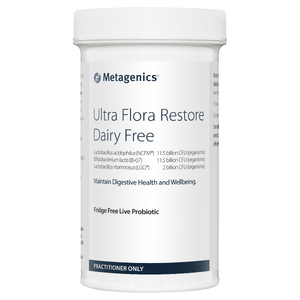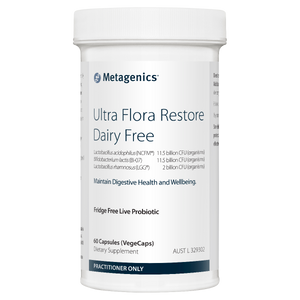My Protocol for Menopause and Peri-menopause by HealthMasters Naturopath Kevin Tresize ND
This treatment summary is provided as information for patients of HealthMasters Naturopath Kevin Tresize ND as part of a treatment plan. The information is to assist patients with understanding of their treatment plan. It is important to note that this is a summary only and is intended to assist with discussion between practitioner and patient as part of consultations.
Definition
Menopause marks the end of the reproductive years of a woman’s life, occurring usually between 45 and 60 years of age, with an average age of 51 years. Menopause occurs as the number of oocytes a woman carries reaches their end point with a marked decrease in ovarian oestrogen and progesterone. The transition into menopause, called peri-menopause, commonly lasts for 2-3 years, with common signs of irregular menses, skin changes, mood changes, depression, memory loss, insomnia, fatigue, vaginal dryness and atrophy, changed libido, night sweats and hot flushes, which may be moderate to debilitating in their effects. During peri-menopause ovarian sex steroid synthesis slows and ovulation becomes unpredictable, causing fluctuating monthly patterns until menses ceases completely. Menopause is confirmed with the cessation of periods for 12 months with consistently elevated serum FSH levels and low serum oestradiol.
Whilst there may be a decline in circulating levels of oestrogen and progesterone (and the ratio between them), this does not reflect the oestrogen and progesterone levels and activity in various tissues. For example, postmenopausal women may sustain relatively high serum oestrogen levels despite declining ovarian oestrogen, as adipocytes (fat cells) become a major source of oestrogen biosynthesis.
The most common reason women seek treatment for in menopause is hot flushes. The drop in oestrogen is a significant catalyst, but not the only cause. Essentially, hot flushes are a heat loss mechanism initiated by short term vasodilation near the skin to allow the blood to cool and lower core temperature. However menopausal women do not experience higher core temperatures, but they have a narrower thermo-neutral zone. Loss of thermoregulation occurs with low DHEA as a result of chronic stress and accompanying neurotransmitter imbalances, including depleted GABA and serotonin with increased noradrenaline and corticotrophin-releasing hormone (CRH). CRH may also contribute to elevated mast cell degranulation, augmenting the vasodilatory response and hot flush severity.
Therefore, stress management during the peri- and post-menopause years is vital.
Aetiology / Risk factors
Factors that may hasten the timing of menopause and worsen the symptoms experienced include:
- Premature ovarian failure
- Hysterectomy retaining the ovaries (thought to advance menopause by approximately 2 years)
- Bilateral oophorectomy (immediate menopause)
- Smoking (hastens follicular depletion)
- Radiation and/or chemotherapy used to treat a malignancy
- Hypothyroidism
- Chronic or acute stress, leading to adrenal insufficiency.
- Toxicity (pesticides, smoking, alcohol, heavy metals)
- Certain medications
Signs and Symptoms
Common signs and symptoms of menopause include the following:
- Absent menstruation for at least 12 months. (Irregular periods occur throughout peri-menopause)
- Hot flushes; of the face, neck, and upper trunk, which may be accompanied by palpitations, dizziness, headaches.
- Night sweats, which may contribute to depression and irritability from insomnia.
- Cold hands and feet.
- Vaginal atrophy and dryness may lead to painful intercourse and/or post-coital bleeding.
- Vulvar pruritis.
- Urinary tract atrophy, resulting in increased frequency, burning, nocturia, incontinence, and infection.
- Sleep disturbances and insomnia.
- Mood changes such as depression, irritability, tension.
- Memory impairment and loss of ability to concentrate.
- Skin changes including loss of skin tone/integrity leading to wrinkles.
- Weight gain and increased central adiposity.
- Breast tissue atrophy
- Increased sensitivity to stimulants such as alcohol and caffeine.
Core Treatment for Menopause and Peri-menopause
1. Foundational recommendations for the menopausal transition and relieve menopausal symptoms:
Support oestrogen levels:
Oestrogen Lifting Herbs (Metagenics O-Lift) - Acute: 1 tablet three times daily. Maintenance: 1 tablet daily
PLUS
Magnesium and Broccoli for Women’s Health (Metagenics FemmeX) - 1 serve twice daily
PLUS
Vitamins B5, B6 & C for Stress & Adrenal Health (Metagenics HPA Essentials) - 1 tablet twice daily
2. Addressing HPA axis dysfunction further supporting the nervous system function:
Stress Less Program
PLUS
If with anxiety:
Herbal Support for Hyper HPA and Stress (Metagenics NeuroCalm) - 1-2 tablets three times daily
Insomnia:
California Poppy and Passionflower for Sleep (Metagenics NeuroCalm Sleep) - 2 in evening or 1 in afternoon plus 2 1-2 hours before bed
If with low mood or depression - refer to depression protocol
ADDITIONAL CONSIDERATIONS
If obese or overweight address body composition
Shake It Professional Weight Management Program
For protection against osteoporosis
Hydroxyapatite and Soy for Osteoporosis (Metagenics Calcitite Osteo) - 2 tablets twice daily or 1 serve twice daily
If with gut derived inflammation or suspected toxicity
Refer to Clinical Detoxification Program protocol
Ongoing nutrition for healthy ageing and chronic disease prevention
Wellness and Healthy Ageing Program with Healthy Hormonal Diet and Lifestyle hand-out
PLUS
Nutrigenomic Support for Healthy Ageing (Metagenics Oxidant Protection) - 1 tablet daily
PLUS
High Purity, Low Reflux, Concentrated Fish Oil Liquid OR Capsules (Metagenics MetaPure Fish Oil) - 4.2mL (1 serve) daily OR 2 capsules twice daily
PLUS
Resveratrol Age Well (Metagenics Resveratrol Healthy Ageing) - 1 tablet daily
PLUS
High Strength, Researched Probiotic Strains (Metagenics Ultra Flora Restore Dairy Free)
Diet and Lifestyle
Dietary and lifestyle guidelines that may assist in the management of menopause include:
- Consume dietary phyto-oestrogens to manage symptoms, and prevent cardiovascular, skeletal and cancer risks of ageing. Examples include soy foods, linseeds, etc.
- Regular weight-bearing and aerobic exercise supports fat burning, muscle strength and bone mineral density.
- Identify areas of diet and lifestyle that may be inducing inflammation and stress with the free Health Appraisal Questionnaire.
- Acupuncture and Traditional Chinese Medicine can help to reduce menopausal symptoms.
- Relaxation techniques can help diminish symptoms associated with menopause.
- Reduced caffeine and alcohol consumption
Pathology Tests
| TEST | INTERPRETATION GUIDELINES |
| Follicle Stimulating Hormone (FSH) | FSH stimulates follicle development in the ovaries and is often used as a gauge of ovarian function. Normal Values Menopausal female: 20-100U/L |
| Luteinizing Hormone (LH) | LH triggers the release of the ovum from the ovary – increased levels are seen in menopause. Normal Values Menopausal female: 15-100U/L |
| Oestradiol (E2) | Oestradiol is the main oestrogen produced by the ovaries in response to LH and FSH. Normal Values Menopausal female: 70-200pmol/L |
| Progesterone (P4) | Progesterone is produced by the corpus luteum after ovulation and is required to stimulate endometrial growth. Reduced progesterone levels are seen in menopause due to anovulatory state. Normal Values Menopausal female: <6nmol/L |
| Omega-3 Index Test | A validated test that measures red-blood cell (RBC) EPA and DHA status to personalise supplemental and diet prescriptions, as well as identifying those at risk of health conditions associated with omega-3 deficiency. An Omega-3 Index in the desirable range of 8%-12% is an indicator of better overall health. |
Pharmaceutical Treatments
- Hormone Replacement Therapy (HRT): Hormones (oestrogen, progesterone, or both) are given to women after menopause to replace the hormones no longer produced by the ovaries. Also called menopausal hormone therapy.
- Oestrogen: included as part of HRT treatment, this hormone relieves hot flashes and vaginal atrophy, improves lipid profiles, and retards osteoporotic bone loss, lessening the incidence of fractures. Oestrogens are available in natural (equine) and synthetic forms. However, studies on the use of synthetic oestrogen suggest that it increases the risk for breast cancer, uterine (endometrial) cancer, thromboembolic events, gallbladder disease, and asthma. Side effects include bloating, nausea, and breast tenderness. Oestrogen can be administered in varied ways: oral; sublingual; transdermal patch; vaginal cream, suppository, or ring; or injection.
- Progesterone: Progesterone, like oestrogen, may be natural or synthetic. Synthetic forms— progestogens—are included as part of HRT treatment, in combination with oestrogen in women with a uterus to prevent endometrial cancer. Side effects of progestogen use include bloating, depression, and breast tenderness. The addition of progestogen to the hormone regimen may obviate the potential cardiovascular benefits of oestrogen.
- Testosterone: provides another option to menopausal women if used in small amounts in combination with oestrogen. The addition of testosterone may improve bone mass, sexual drive, and mental alertness. Side effects include hirsutism, acne, fluid retention, anxiety, and depression.
My Protocol for Menopause and Peri-menopause by HealthMasters Naturopath Kevin Tresize ND - Unlocked
Metagenics Ultra Flora Restore Dairy Free 30 capsules
Metagenics Naturopathic Medicines
Metagenics Ultra Flora Restore Dairy Free 60 capsules
Metagenics Naturopathic Medicines

